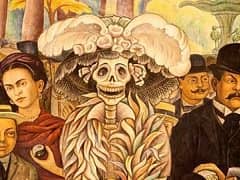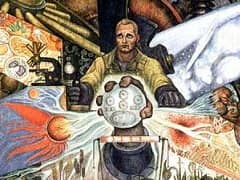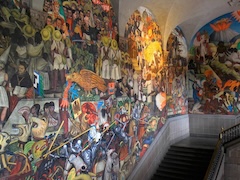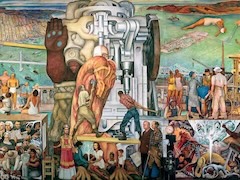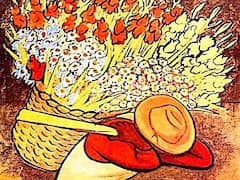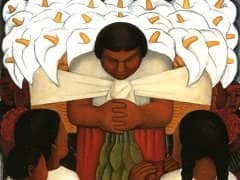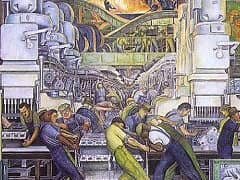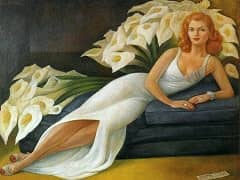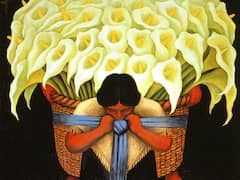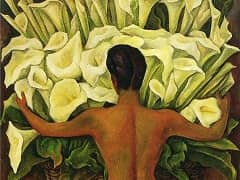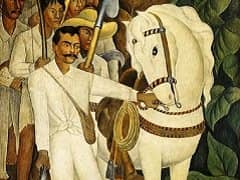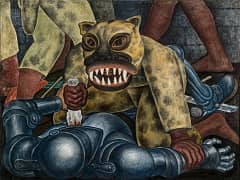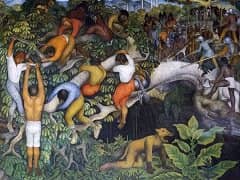Frozen Assetes, 1931 by Diego Rivera
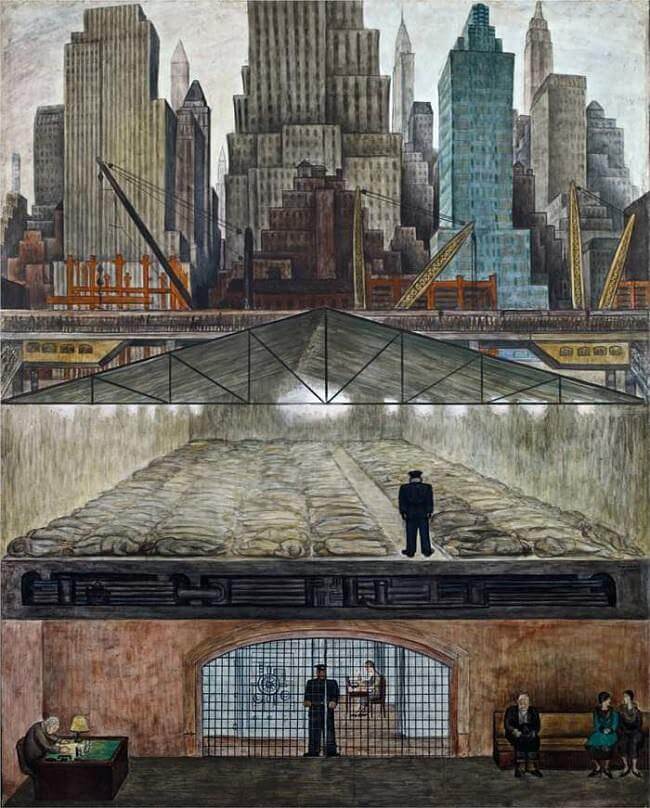
In Frozen Assets, Rivera coupled his appreciation for New York's distinctive vertical architecture with a potent critique of the city's economic inequities.
On November 13, 1931, Rivera arrived in New York City with Frida Kahlo. The city amazed and appalled him. If California had seemed immune from the effects of the Great Depression,
New York was not. There were breadlines and suicides. In 1931, hospitals reported ninety-five deaths from starvation. Men sold apples on corners, lived in shanties in Bryant Park, slept in doorways. As the money dried
up, work stopped on the Triborough Bridge and the Hampshire House. Families lost their homes in Brooklyn and Queens. Groucho Marx said that things were so bad "the pigeons started feeding the people in Central Park."
More young people turned to Marxism, and membership in the Communist Party soared to the largest numbers in its history (about 80,000). This was no threat to the Republic, for the left, as usual, was riddled with schism.
Left-wing New York was a mixture of turmoil and despair. More importantly, there seemed to have been a much wider American failure of morale.
The panel's upper register features a dramatic sequence of largely recognizable skyscrapers, most completed within a few years of Rivera's arrival in New York. In
the middle section, a steel-and-glass shed serves as a shelter for rows of sleeping men, pointing to the dispossessed labor that made such extraordinary growth
possible during a period of economic turmoil. Below, a bank's waiting room accommodates a guard, a clerk, and a trio of figures eager to inspect their mounting
assets in the vault beyond. Rivera's jarring vision of the city - in which the masses trudge to work, the homeless are warehoused, and the wealthy squirrel away their
money - struck a chord in 1932, in the midst of the Great Depression.
The painting demonstrated a shrewd insight into the reality of New York: the city is never merely what can be seen. The frescos grim, taut composition suggests a city imprisoned by the inevitability of history. The painting
was labeled Frozen Assets by a visiting journalist and it has retained that title since then.

